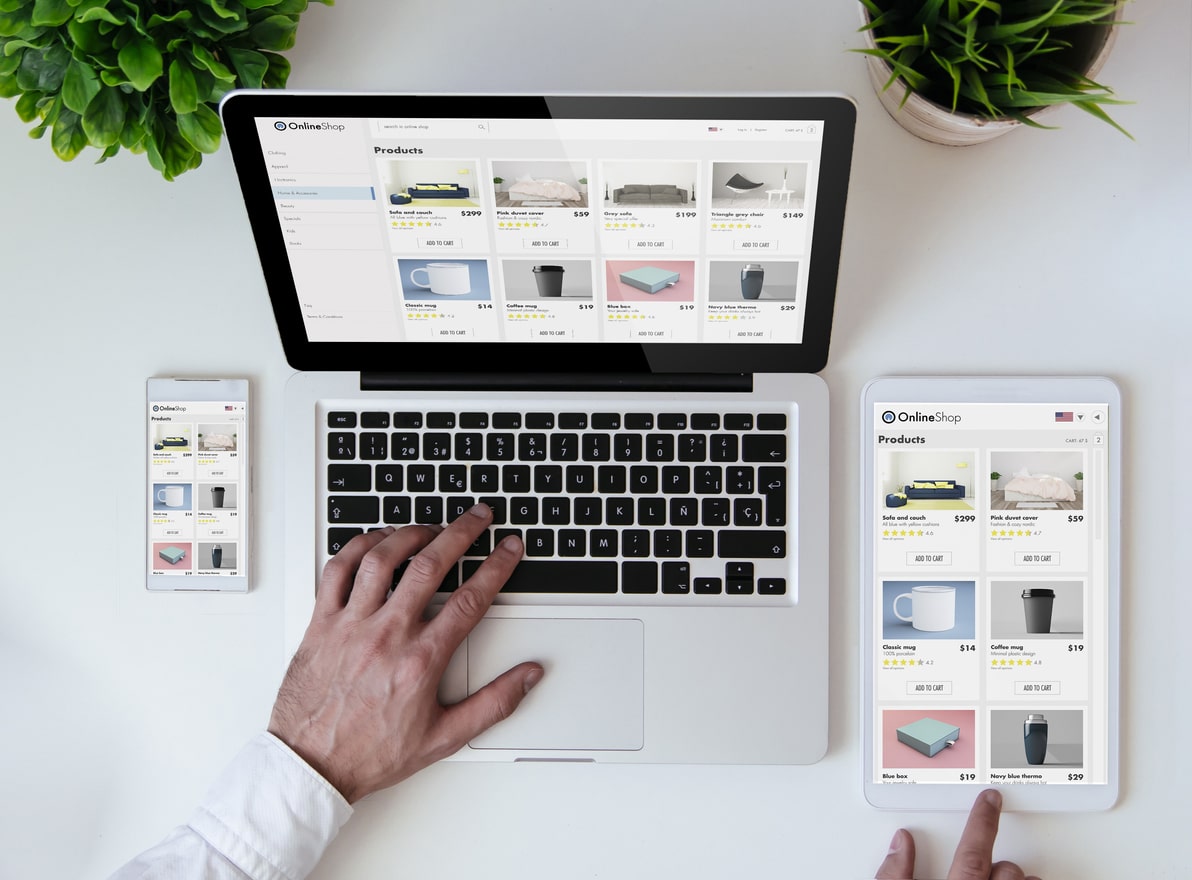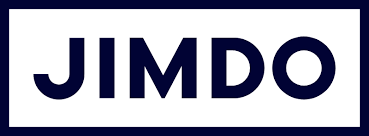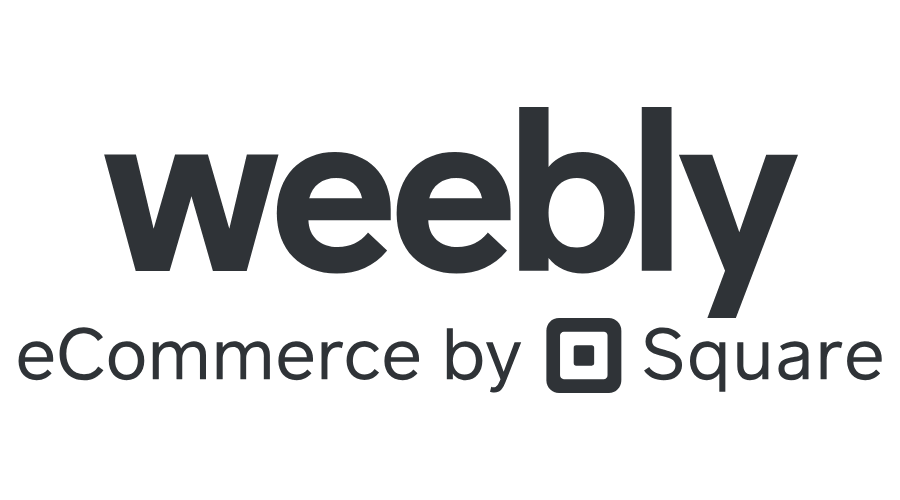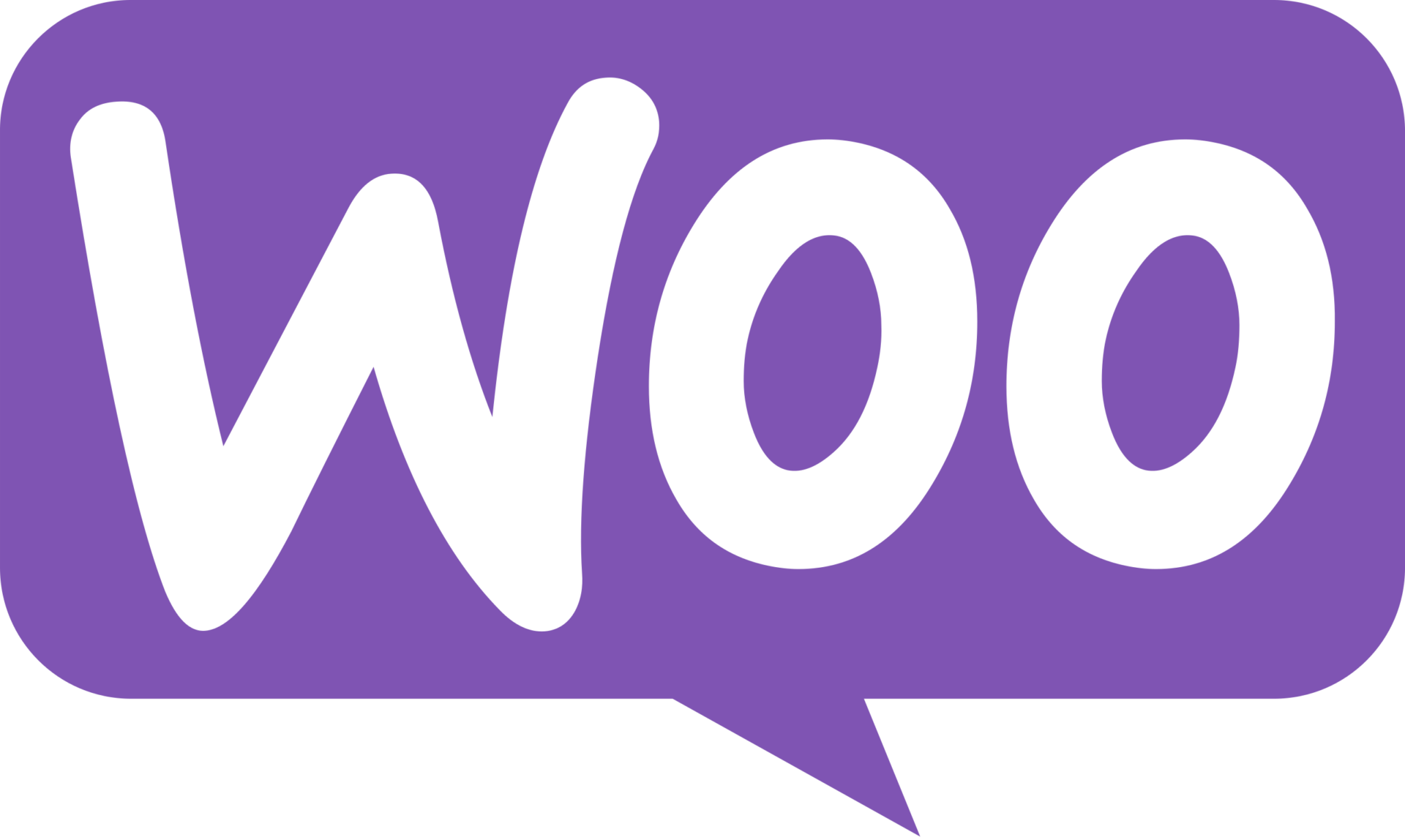eCommerce website builders allow business owners to create online stores. These online stores can give your customers more choices and flexibility. While many eCommerce website builders let you launch an online store, some are better than others as they offer tools like plugins. Some of these plugins and tools handle everything from listing products and creating appointments to monitoring analytics and streamlining ad campaigns.
This guide will outline some of the things to look for in an eCommerce website builder, along with some of the top picks.
QuickLook: Best Free eCommerce Website Builders
Considerations Before Choosing a Free eCommerce Platform
Business owners can choose from many types of free eCommerce platforms. Listed here are some of the points you should keep in mind to make the right choice.
Limitations and Restrictions
Many free eCommerce platforms have limitations in place that you can lift if you buy the paid version. You may have limits on how many products you can list and the website’s total bandwidth. If you upload a lot of files to your eCommerce website, you may need a solution that does not limit your storage.
Customization Options
Customizable eCommerce website builders make it easier to incorporate your branding in your online store. Extra features can also help with growing your eCommerce store. A lack of customization can make an eCommerce platform feel limited and minimize its potential upside for your business. You should also see if you can lead customers through a funnel, and if you can create follow-up pages people can get redirected to after buying your product.
Mobile Responsiveness
Mobile responsiveness is a critical feature for search engines that impacts the user experience. If potential customers find your website difficult to navigate on their mobile devices, you can end up losing sales. Business owners should look for free eCommerce website builders that are optimized for mobile devices.
Support and Customer Service
You will have questions along the journey and need help from a knowledgeable representative. Free eCommerce website builders have varying levels of customer support. You can look at review sites like Trustpilot to gauge if these companies have good customer service.
10 Best Free eCommerce Website Builders
Wondering which eCommerce website builder is most suitable for your business? These are the 10 top choices to consider if you want a free solution to get started.
Square
Power Your Entire Business.
Sell anywhere. Diversify revenue streams. Streamline operations. Manage your staff.
Square Online is an eCommerce website builder from Square. You can set up a store that accepts online and in-person payments within a few minutes with Square Online. Its websites are mobile-friendly and offer an app-like shopping experience.
Overview of features:
- SEO tools
- Sell on social media platforms
- Sync with Square POS
- Pickup, local delivery, and shipping
- Personalization
- Subscriptions
- Accepts multiple payment types
Pricing plans and packages:
- Free – $0/mo + (2.9% + 0.30) per transaction
- Plus – $29/mo + (2.9% + 0.30) per transaction
- Premium – $79/mo + (2.9% + 0.30) per transaction
Pros:
- You can set up an online store for free without a trial
- SEO tools included
- Unlimited product listings
Cons:
- You must use Square as your payment processor
- You need a paid plan to choose PayPal for payment processing
- Custom pricing is not supported
Jimdo
Help your customers find you with a home for your business online. Jimdo has all of the digital tools you need, including a customized, compliant website, an online store that's open 24/7, and more.
Jimdo gives business owners the digital tools they need to create a customized website, an online store, and other resources. This eCommerce website builder lets you create mobile-optimized pages and use a flexible layout to easily incorporate your branding. You can book appointments on your website and will not have to worry about transaction fees.
Business owners can get started with a Play account, but they will need an Online Store “Business” or “VIP” plan to use eCommerce features.
Overview of features:
- Shipping and local pickup options
- Sales and discounts
- Sell on Instagram and Facebook
- Book appointments on your website
Pricing plans and packages:
- Play – $0/mo
- Start – $9/mo (domain included and ad-free)
- Grow – $14/mo (visitor stats, SEO, and personalized support within four hours)
- Online Store “Business” – $18/mo (product variants, social marketing, and social selling)
- Online Store “VIP” – $24/mo (unlimited storage and professional design review)
Pros:
- No transaction fees
- Receive payments via Stripe or PayPal
- SSL included in all plans
Cons:
- You have to select the Grow monthly plan to get visitor stats
- The free version displays advertisements on your website
- A Play account limits you to creating five web pages
Weebly
Get access to customizable webpage designs and useful tools to build your website and grow your ideal business. Easily build a free website to help you get discovered and grow your customer base in style.
Start today with our powerful free website builder.
Weebly is an eCommerce tool by Square that offers several features for its free plan. Business owners can unlock additional features by switching to a paid plan, but you can get most of what you need with the free option. Weebly runs ads on websites that use the free plan. It’s one of the most affordable options for businesses that want to launch online stores.
Overview of features:
- Free SSL security
- The ability to add a third-party embed code
- Unlimited items
- Inventory management
- In-store pick-up
- Automatic tax calculator
- Coupons
- SEO and lead capture
Pricing plans and packages:
- Free – $0/mo
- Personal – $10/mo
- Professional – $12/mo
- Performance – $26/mo
Pros:
- Many features around marketing, eCommerce, and website building in the free version
- No limit on how many products you can list in your store
- Lead capture is free
- Create coupons and gift cards
Cons:
- Free plans have Square ads
- Free plans are not eligible for phone support
- Fewer customization options than other eCommerce website builders
WooCommerce
The ecommerce platform that grows with you
No matter what success looks like for you, you can do it with Woo. Our open-source ecommerce platform helps merchants and developers build successful businesses for the long term.
WooCommerce is a free WordPress plugin that has hundreds of extensions and themes. Some of the extensions and themes cost money, but you can get started with an online store as long as you have a WordPress website. Using the plugin makes it easier to add eCommerce to your existing website instead of creating a separate website that exists outside of your WordPress website.
Overview of features:
- Supports automatic rebilling on failed subscription payments
- Subscribers can manage their plans without your intervention
- Detailed reports give you plenty of data about how customers interact with your site
- Over 25 payment gateways
- Enables automatic recurring revenue
Pricing plans and packages:
- Free
- Some extensions have one-time payments or monthly subscriptions
- Generate recurring revenue from your products
- You can set up free trials and sign-up fees for your products
Pros:
- Hundreds of extensions available
- Over 70 themes available
- Integrate with your WordPress site through the plugin
Cons:
- You must have a WordPress site
- Extensions can get expensive
- You may need several extensions to get the experience you want
Ecwid
Start Selling Everywhere Online
Become the next online success story — sell anything, anywhere, to anyone. Control everything from a single platform with centralized inventory, order management, and pricing.
Ecwid is an eCommerce website builder powered by Lightspeed that lets businesses sell on social networks, Amazon, and eBay. The platform offers introductory features in the free plan that lets you do business and sell products, but the paid plans have far more features. You can build a new online store with Ecwid’s software or connect to any website in seconds. Business owners can even sell on the go with the company’s app for iOS and Android devices.
Overview of features:
- Online advertising – Facebook, Google, Pinterest, and Snapchat. TikTok ads for paid plans
- Tax invoices
- Mobile responsive shopping cart
- Instant site builder
- Can sell simultaneously on multiple websites
Pricing plans and packages:
- Free – $0/mo
- Venture – $14.08/mo
- Business – $29.08/mo
- Unlimited – $82.50/mo
Pros:
- The free account supports an online store
- Unlimited bandwidth
- You can choose from free website templates
Cons:
- You have to pay for a monthly plan to sell on social networks, Amazon, and eBay
- You can only list five products with a free account
- You only get chat or phone support with a paid plan
Site123
Site123 is a beginner-friendly website builder that makes it easy to get started. The drag-and-drop editor has room for customization and can help you launch an eCommerce store quickly. The website builder has several SEO and marketing tools and robust plugins that give your website more capabilities.
Overview of features:
- Analytics
- Social media integrations
- SEO resources
- Website backups
- Free SSL
Pricing plans and packages:
- Free – $0/mo
- Premium – $12.80/mo
Pros:
- Easy to use
- Marketing tools that help you get more visibility
- Great customer support
Cons:
- You need a paid plan to create an eCommerce store but can set up your website for free
- 250 MB storage and bandwidth in the free plan
- You can find more advanced tools with other website builders
Wix
Create a website without limits. Build and scale with confidence. From a powerful website builder to advanced business solutions—we’ve got you covered.
Try Wix. No credit card required.
Wix is an eCommerce website builder that lets you quickly launch websites and open online stores. The company offers a mix of advanced features and affordable plans. Wix offers a free plan and free website hosting, but you will have to pay to access eCommerce features.
Overview of features:
- Free domain hosting
- Abandoned cart recovery
- Customized reports
- Over 200 app integrations available
- Site Booster improves your SEO
Pricing plans and packages:
- Free – $0/mo
- Light – $16/mo
- Core – $27/mo
- Business – $32/mo
- Business Elite – $159/mo
- Enterprise – Contact for pricing
Pros:
- Every plan has 24/7 customer care
- Lists up to 50,000 products
- Enables payment plans and recurring payments
- Site Booster helps you get discovered on Google
Cons:
- Free plans have ads and limited capabilities
- Every plan has storage limits
- Most plans have limited video hours
- You need the Core plan to use eCommerce features
Shopify
Making Commerce Better for Everyone
Learn more about our beginnings and how we are building for the world’s newest entrepreneurs and biggest brands
Shopify is one of the best eCommerce website builders. The software has many features that help it stand out, but there is no permafree plan. You can get a three-day free trial and then pay $1/mo for the first three months for certain plans. After that three-month test run, you will have to pay for a monthly plan to continue using Shopify.
Overview of features:
- Over 1,200 apps and plugins
- Staff accounts
- eCommerce automations
- Inventory locations
- Shipping discounts
Pricing plans and packages:
- Starter – $5/mo
- Basic – $39/mo ($1/mo for the first 3 months)
- Advanced – $399/mo ($1/mo for the first 3 months)
- Plus – $2,000/mo
Pros:
- Can list your Shopify catalog across top social media platforms and online marketplaces
- 24/7 customer support
- Point of sale system includes inventory tracking, staff management, and additional resources
- Easy to build an online store
- 1-click checkout
Cons:
- Shopify’s services are more expensive than other eCommerce website builders
- Limited customization
- You’re stuck with the platform due to the challenges of switching to another platform
- No email hosting
BigCommerce
BigCommerce is another top eCommerce website builder that has plenty of great features but no permafree plan. You can get a 15-day free trial but thereafter must choose one of the plans if you want to continue using the platform. BigCommerce has affordable plans that make it easy to create websites and sell your products. All plans have 0% transaction fees and unlimited product listings.
Overview of features:
- Ability to sell on social networks, Amazon, eBay, and Walmart
- Mobile responsive website
- Single-page checkout
- Multiple payment methods
- Reporting tools
- Abandoned cart saver
- Built-in blog
Pricing plans and packages:
- Standard – $29/mo
- Plus – $79/mo
- Pro – $299/mo
- Enterprise – Contact for pricing
Pros:
- No limits on product listings, bandwidth, or storage in any of the plans
- Unlimited staff accounts on all plans
- Drag-and-drop page builder makes it easy to create eCommerce websites
Cons:
- No permafree plan
- Very few typefaces, and no support for custom typefaces
- Not much variety with the free themes
Squarespace
Create a customizable website or online store with an all-in-one solution from Squarespace. Choose a website template and start your free trial today.
Squarespace has a 14-day free trial before you have to commit to one of the company’s paid plans. The Business Plan lets you accept payments and provides additional resources to grow your audience. You can access some of the best-in-class templates with any Squarespace plan and quickly launch your website.
Overview of features:
- Mobile optimized websites
- Free custom domain
- Advanced website analytics
- Fully integrated eCommerce
- Merchandising resources to increase revenue
Pricing plans and packages:
- Personal – $16/mo
- Business – $23/mo
- Commerce Basic – $27/mo
- Commerce Advanced – $49/mo
Pros:
- Many high-quality templates available
- SEO and marketing tools
- Squarespace is easy to use
Cons:
- Limitations on customization
- Other eCommerce website builders have more plugins and extensions
- Multi-currency selling is not supported
Get the Right eCommerce Website Builder for Your Business
An eCommerce website builder gives you more exposure. You can sell products through an online store and increase your web traffic with SEO and social media. Some eCommerce website builders are free and offer sufficient features to help you get started. However, it may be worth a small investment to access additional features.
FAQs
Can you sell anything on a free eCommerce website?
Yes, you can sell almost anything on a free eCommerce website. Each company has its own rules regarding what you can and cannot sell, but most businesses will be fine.
Can you accept payments on a free eCommerce website?
Yes, you can accept payments on a free eCommerce website.
Do you need any technical skills to create a free eCommerce website?
No, you do not need any technical skills to create a free eCommerce website. Many tools make this entire process seamless.
Can you use your own domain name for a free eCommerce website?
In some cases, you can use your own domain name for a free eCommerce website.
Are there any transaction fees associated with free eCommerce websites?
Free eCommerce websites often have transaction fees.















